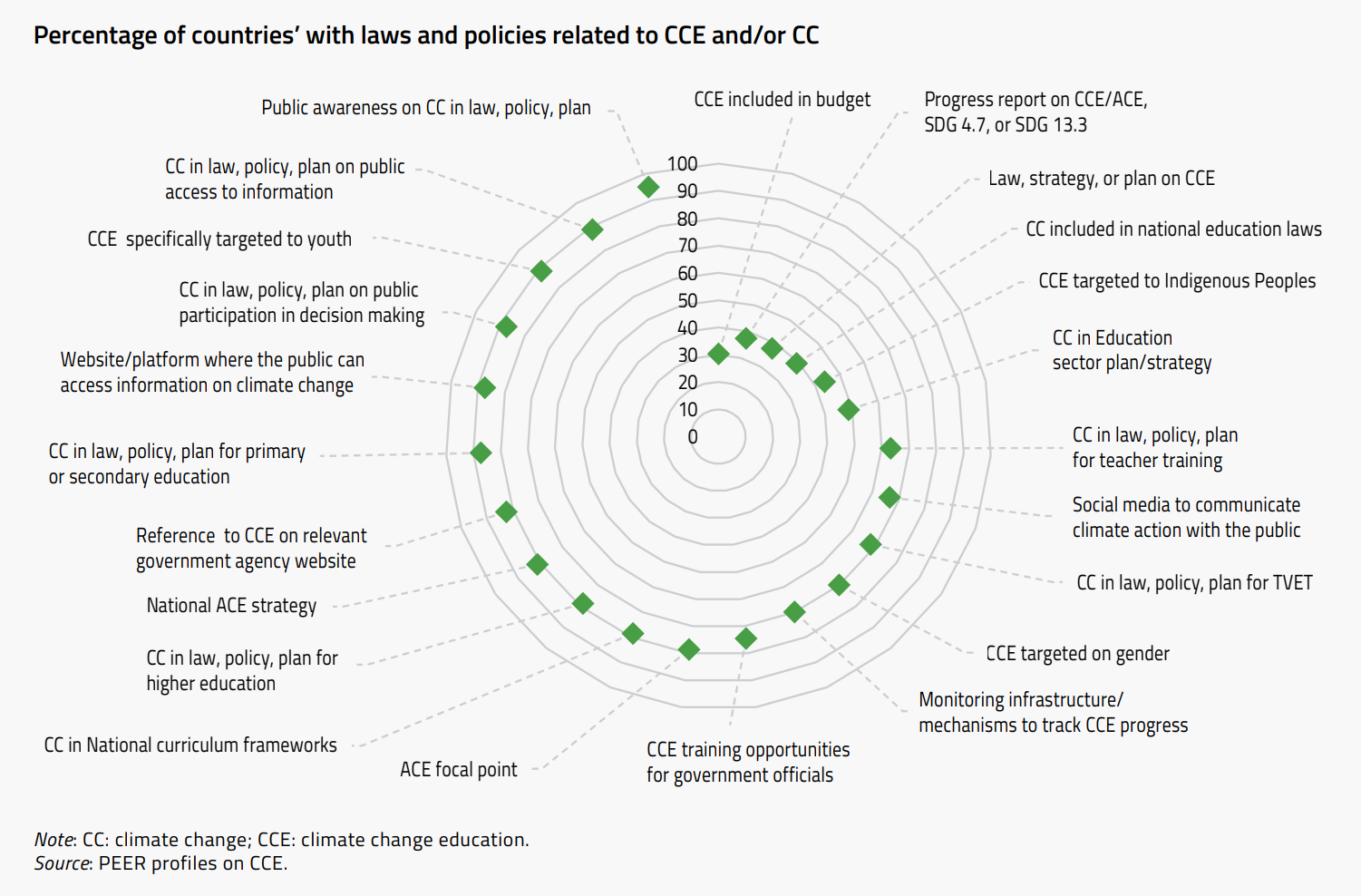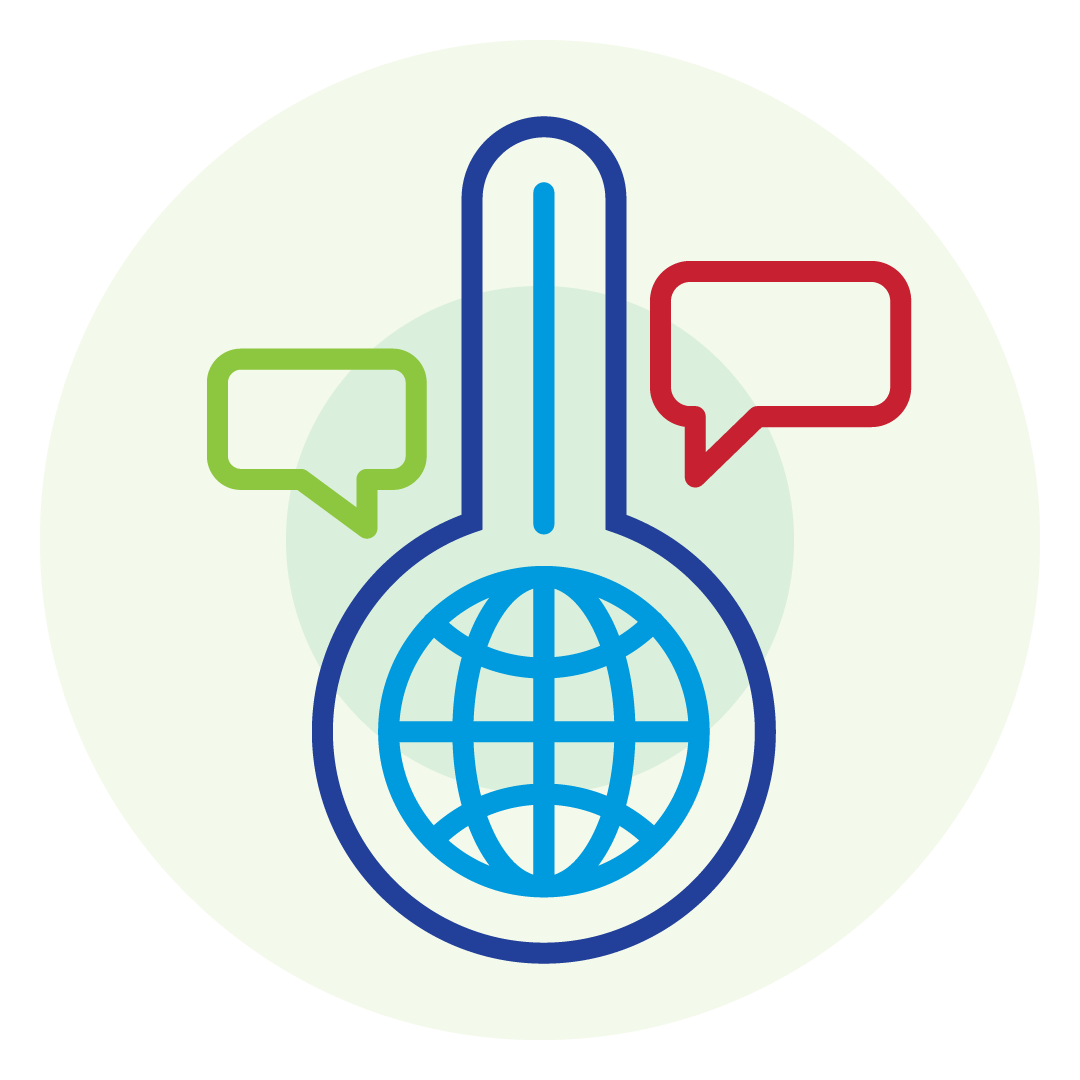CLIMATE CHANGE COMMUNICATION AND EDUCATION
Only 30% of the 80 countries have publicly available CCE budgets.
Only 38% of countries have a national level law, policy or strategy specifically focused on climate change education.
63% of countries have teacher training plans that include a focus on climate change.
Explore the policies in your country using the menu on the right.

INTRODUCTION: CLIMATE CHANGE COMMUNICATION AND EDUCATION
The GEM Report has partnered with the Monitoring and Evaluating Climate Communication and Education Project, hosted by the Sustainability and Education Policy Network (SEPN) at the University of Saskatchewan, to advance global climate change literacy and action. As part of this project, the GEM Report and the MECCE team have been compiling systematic and comprehensive country profiles on national education laws and policies related to climate change communication and education.
The profiles respond to the need of improving the evidence base on the implementation of national education policies on climate change communication and education. Specifically, they offer a comparative perspective of the progress countries are making on the realization of Article 6 of the United Nations Framework Convention on Climate Change (UNFCCC), Article 12 of the Paris Agreement and SDG target 4.7. With the profiles’ information, it is possible to build indicators to enable benchmarking and target-setting.
The profiles were primarily prepared through a review and synthesis of international commitments, national laws, policies, action plans and programmes, complemented with the analysis of relevant literatures and press. The profiles, each about 6,000 words long, are available in English, French or Spanish. Experts and national focal points for Action for Climate Empowerment (ACE) were invited to review, update and validate the information. Countries are encouraged to continue this follow-up by providing comments and feedback to ensure they are comprehensive, up-to-date and accurate. When this step of the process is complete, it is indicated on the website on the relevant page of the country’s profile with a blue tick.
Available countries: Albania, Argentina (in Spanish), Australia, Azerbaijan, Bangladesh, Bolivia, Brazil, Cabo Verde, Cambodia, Cameroon, Canada (in French), Chile, China, Colombia (in Spanish), Cook Islands, Costa Rica (in Spanish), Côte d’Ivoire, Cuba, Czech Republic, Dominican Republic (in Spanish), Ecuador (in Spanish), Egypt, El Salvador, Ethiopia, Fiji, France, The Gambia, Germany (to come, under review), Ghana, Haiti, Iceland, India, Indonesia, Israel, Italy, Japan, Jordan, Kenya, Kyrgyzstan, Lao PDR, Lebanon, Lithuania, Madagascar, Maldives, Malta, Mexico (in Spanish), Morocco (in French), Mozambique, Myanmar, Namibia, Nauru, New Zealand, Nigeria, Norway, Panama, Pakistan, Portugal, Qatar, Republic of Korea, Romania, Rwanda, Saint Lucia, Scotland (United Kingdom), Senegal, South Africa, South Sudan, Sweden, Tajikistan, Thailand, Tonga, Trinidad and Tobago, Türkiye, Tuvalu, United Arab Emirates (under review), United States, Uruguay, Vanuatu, Viet Nam, Zimbabwe and Zambia.
CONTENT: CLIMATE CHANGE COMMUNICATION AND EDUCATION
The climate change communication and education profiles collect information on climate contexts; climate change education (policy, curriculum, teacher education and assessment) in primary and secondary education; higher education; teacher education; TVET and adult education; communication (public awareness; public access to education; public participation); and monitoring. Their structure is as follows:
1. Context
i. Climate change context
ii. Relevant government agencies (climate change communication and education)
iii. Relevant laws, policies, and plans (climate change communication and education)
iv. Terminology used for climate change communication and education
v. Budget for climate change communication and education2. Climate change education and training in the country
i. Climate change in pre-primary, primary, and secondary education
ii. Climate change in teacher training
iii. Climate change in higher education
iv. Climate change in training and adult learning3. Climate change communication in the country
i. Climate change and public awareness
ii. Climate change and public access to information
iii. Climate change and public participation4. Monitoring and evaluation
i. Country monitoring
ii. MECCE Project Monitoring









